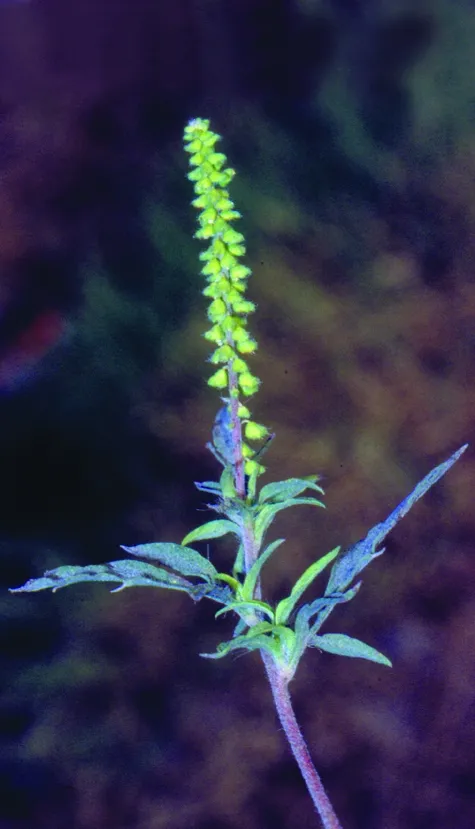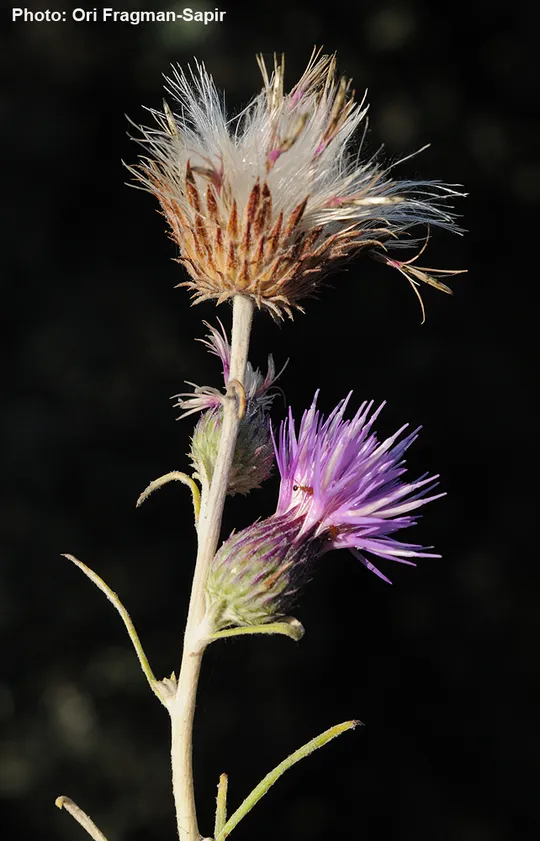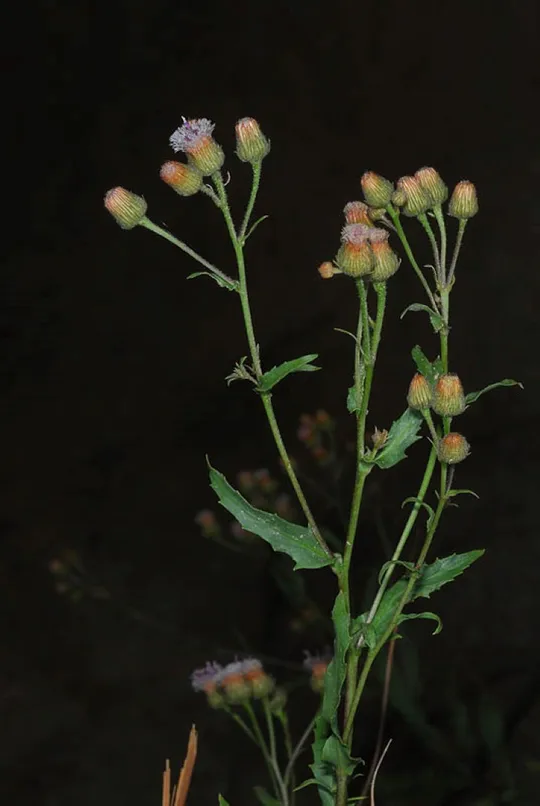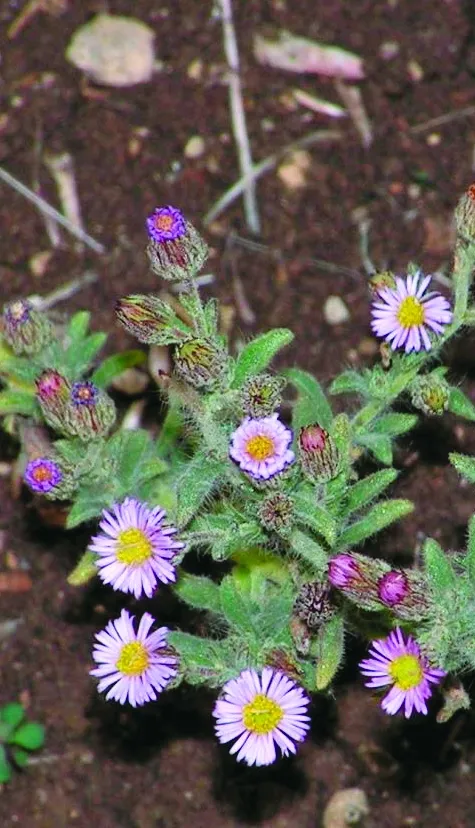Staehelin's Jurinea
Jurinea staehelinae
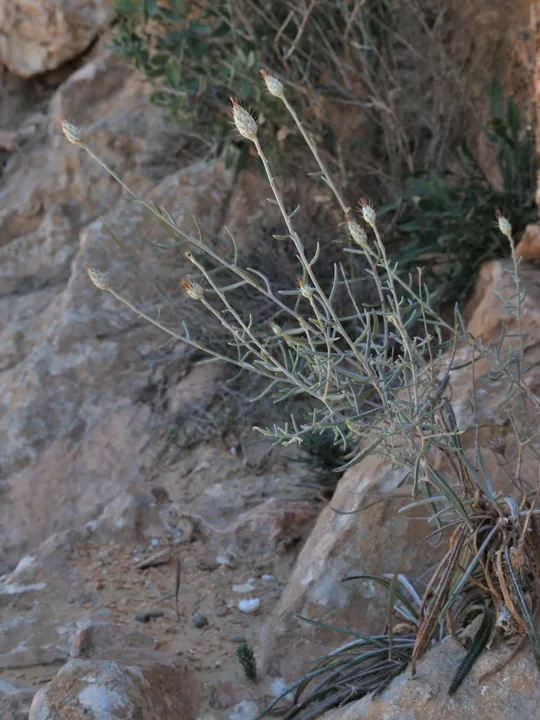
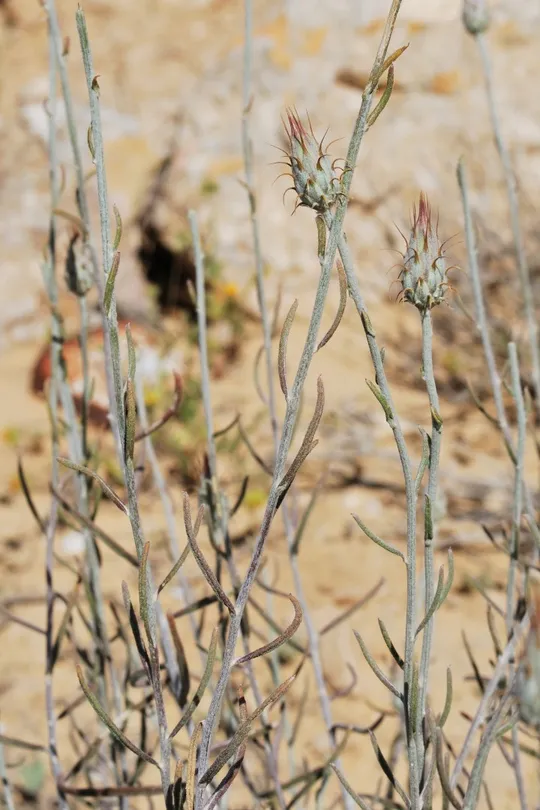

Israel Jurinea staehelinae grows
only in the eastern Negev Highlands at four closely situated locations: Arod
Pass, Mount Ido, Karne Ramon and Mount Lots. On Mount Lots, at least two sites are
known (Wadi Eli'av, Wadi Elitsur). The species is relatively common on the Lots
Ridge but no thorough survey has been conducted in the area. Tuvia Kushnir and
the botanist Kotschy collected the species on the Hermon near the peak. J. staehelinae
is common on Duvdevan Ridge.
Rocky limestone outcrops on high desert Mountains at altitudes above 900 meters. In Edom in Jordan Jurinea staehelinae also grows at high altitudes, in soil pockets on limestone cliffs and on rocky limestone slopes.
The genus Jurinea has 100 species
found in the eastern Mediterranean Basin up to Central Asia. The distribution
center of the genus is Central Asia. There are 41 species in the Middle East (Turkey
alone has 17 species), and the region is one of the main diversity and
evolution centers of the genus. Most of the species are dwarf shrubs that are
noted for their extremely variable leaf shape. The characteristics of the achenes
are a permanent and important diagnostic sign. The characteristics of the involucral
bracts of the capitulum are correlated with vegetative features of the plant
and with its geographic distribution, and therefore are important diagnostic
traits.
The species seems similar to one of the perennial Centaurea
species, and is outwardly similar to Centaurea damascena. All Jurinea
species have a thorn at the end of the involucral bract, a feature found in
most Centaurea species as well. However, the genus Jurinea
is systematically distant from the genus Centaurea: the
pappus of its achene is pinnate and the point where the achene is joined to the
capitulum receptacle at its base. Furthermore, unlike the Centaurea
species, which have secondary thorns on the tip of the involucre or its bracts,
Jurinea
has an undivided, arched tip. Jurinea is close on one
hand to the steppe genus Cousinia and on the other to the Mediterranean genus
Carduus, but its leaves are not thorny.
·
Jurinea staehelinae is found on only five sites
in Israel, all in one area in the eastern Ramon Crater.
·
No rare plant survey was
conducted in the eastern Negev Highlands, where J. staehelinae grows. The estimated number of plants at each
site is somewhere between 10 and 200.
·
All
sites in Israel are located in the Negev
Highlands Reserve, they are far from settlements or roads, and
their threat level is low.
A survey of rare species should be conducted in the eastern
Ramon Ridge, on Mount Sagi and on all the nearby desert mountains whose height
exceeds 700 meters, in order to locate all the Jurinea
staehelinae populations. If the number of populations exceeds 10,
the species should be removed from the red list, as there is no real threat to
it within a nature reserve. Two sites should be demarcated and J. staehelinae
should be monitored in them, including the annual seed crop and standard
demographic parameters.
Jurinea staehelinae is endemic to the Levant: it grows in Jordan, southern Israel, the Hermon, the Lebanese mountains, and in the Ǧazira and Syrian deserts in Syria. In Jordan the species grows only on the Edom Mountains at altitudes from 1000 to 1550 meters on limestone rocks; it is absent on sandstone. The species does not grow in Sinai or in Egypt.
Jurinea
staehelinae is a small rare steppe dwarf shrub, growing in mountains
in the Syrian Desert and in the high transition zone of the Fertile Crescent. The
eastern Ramon is the only region in Israel where it grows, as well as being the
most southwestern point of its distribution in the Middle East.
Current Occupancy Map
| 1000 squre meter pixel | 5000 squre meter pixel | 10000 squre meter pixel | |
|---|---|---|---|
| number of observations | 0 | 0 | 0 |
| in total pixels | 0 | 0 | 0 |
| Family | Asteraceae |
| Classification | On the extremely rare species list |
| Ecosystem | Desert Mountains, High Desert Plains |
| Chorotype | Western Irano - Turanian |
| Conservation Site | Wadi Elitsur at Mount Lots |
| Rarity |
1
2
6
|
|---|---|
| Vulnerability |
0
0
4
|
| Attractiveness |
0
0
4
|
| Endemism |
0
1
4
|
| Red number |
1
2.1
10
|
| Peripherality | N |
| IUCN category | DD EW EX LC CR EN VU NT |
| Threat Definition according to the red book | Least concern |
 Based on:
Based on:
